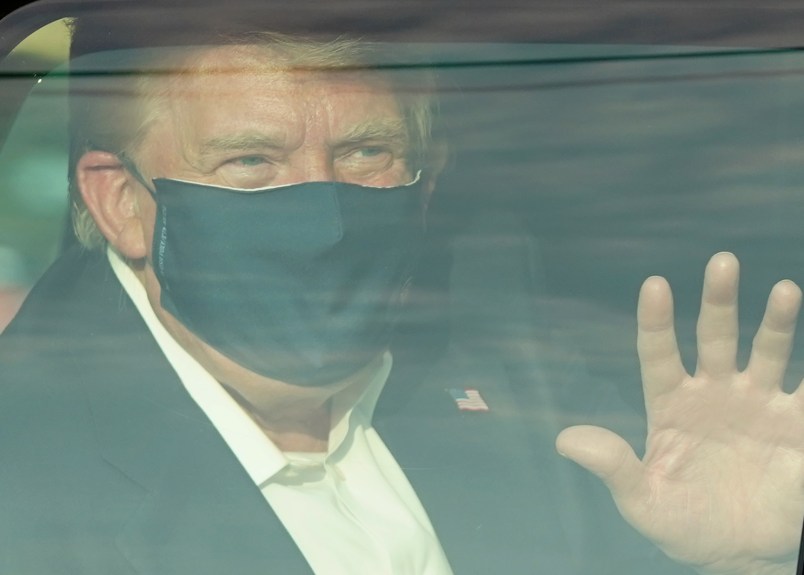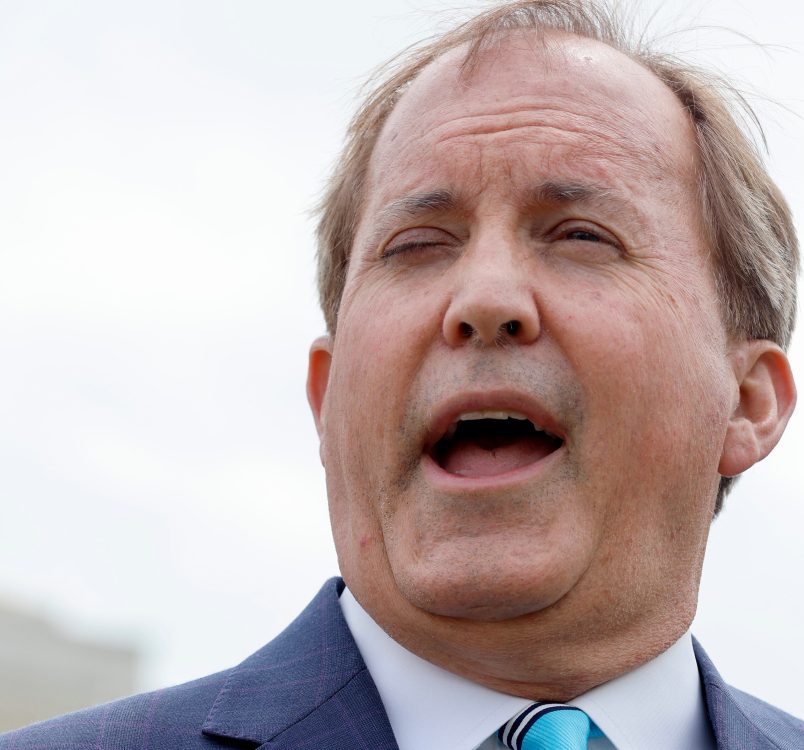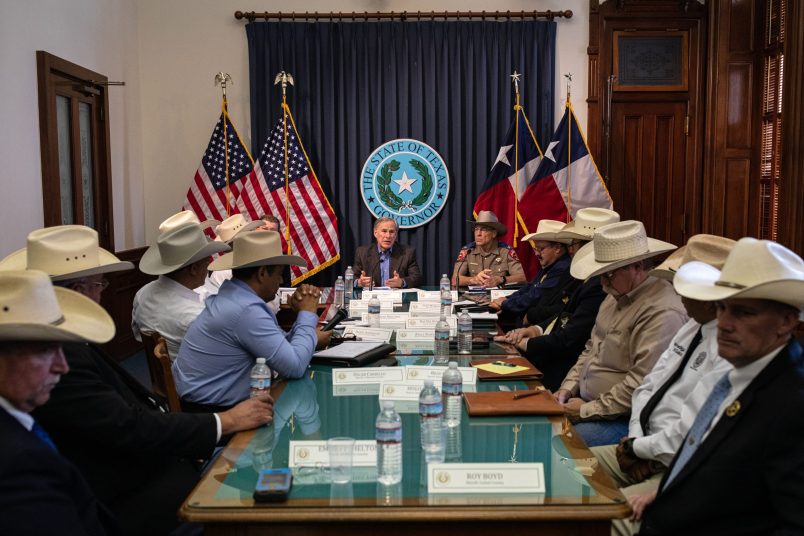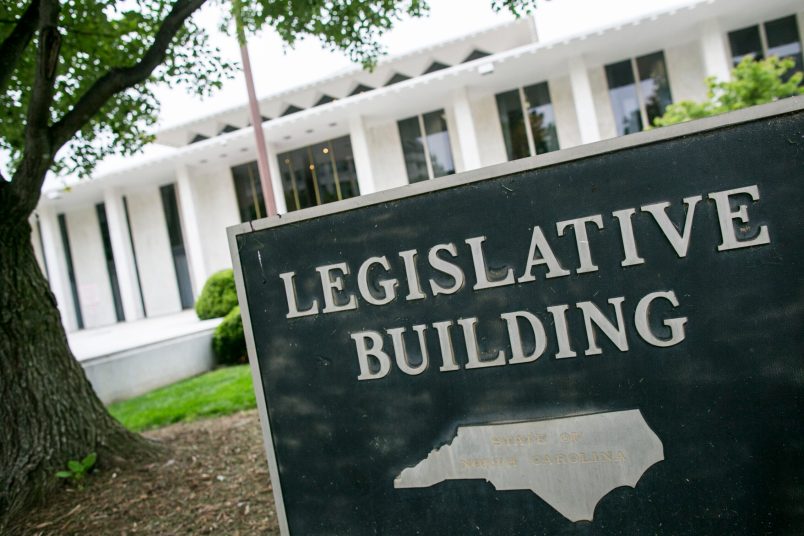With the COVID-19 pandemic potentially nearing an end, Trump administration officials responsible for managing the crisis have begun to try to spin their way out of the carnage that the virus left behind.
A CNN documentary on the course and handling of the COVID-19 pandemic, released this past weekend, provided an opportunity for some of the top officials involved to tell their version what happened.
In this case, former HHS Assistant Secretary for Health Brett Giroir and White House COVID Response Coordinator Deborah Birx went out of their respective ways to play down the consequential decision to leave handling the pandemic to the states and to release guidance that would artificially lower the number of positives in the run-up to the 2020 Presidential election.
Here are five points on the biggest attempts at creating a revisionist history of COVID-19 made by Trump officials in the documentary.
Giroir admitted part of the Trump administration’s first major failure: testing supply.
The pandemic’s early days last year saw the country come to terms with massive blockages and shortages in the medical supply chain.
This led to a mad dash for ventilators as hospital beds in New York City filled up, and as hospitals unable to acquire PPE saw their nurses don garbage bags to treat patients.
But chief among these problems was testing: with the virus spreading virtually unabated in March, the lack of tests meant that doctors were unable to correctly diagnose and isolate patients with COVID-19, and coroners were unable to affirmatively state that it was the virus that had killed people.
To CNN on Monday, Giroir, the COVID-19 testing czar, made a stunning admission: “When we said there were millions of tests available, there weren’t, right?”
“There were components of the test available, but not the full meal deal,” he added.
That was not the image the Trump administration conveyed. The former president himself said in March 2020 that anyone who wanted a test could get one, while Giroir himself offered rosy projections.
But he didn’t go far enough.
But Giroir’s admission and other remarks during the documentary obscure the reality of the policy that he helped implement: let the states duke it out among themselves in the fight to survive the pandemic.
“We had no systems in place,” Giroir told CNN. “The way to find out how many ventilators were in place was to call up and find out.”
It’s true that the Trump administration faced a daunting task in February 2020. But it did not choose to respond in a way that used the full powers of the federal government to alleviate national shortages of such supplies as PPE.
Rather, the Trump administration chose to leave it to the states and individual health care providers to start bidding wars to obtain much-needed pandemic-fighting items from a growing number of unvetted and shady suppliers. The Trump administration complicated the problem by periodically interceding to seize PPE supplies ordered by the states.
That policy — let the states duke it out — extended all the way to vaccine distribution, where, according to Stat News, the Trump administration actively lobbied Congress not to appropriate money for the states to distribute the shots.
Overall, the policy placed an immense burden on the country’s already-underfunded public health infrastructure.
“We have a terrific sick care system,” Giroir noted during the CNN documentary. “We don’t have a public health or well care system.”
Birx acknowledged she undersold the severity of the virus.
Helping to manage the White House’s overall response to the crisis was Dr. Birx, installed in February as Mike Pence’s “right arm” on the task force.
Birx drew attention for tacking in support of Trump during the final year of his presidency, drawing criticism from many in the medical and public health community that she abetted the politicization of the virus.
In the documentary, Birx told CNN that she felt she was under immense pressure from Trump to downplay the virus’s severity.
“He felt very strongly that I misrepresented the pandemic in the United States, that I made it out to be much worse than it is,” she told the network. “I feel like I didn’t even make it out as bad as it was.”
That’s an admission of the criticism: Birx downplayed the severity of the virus.
It also overlooks the extent to which she spoke in support of Trump.
“He’s been so attentive to the scientific literature and the details and the data,” Birx said in a March 2020 interview with the Christian Broadcasting Network. “I think his ability to analyze and integrate data that comes out of his long history in business has really been a real benefit during these discussions about medical issue.”
“He understands the importance of the granularity,” Birx added.
As the election neared, the Trump administration again turned against testing.
That same pressure increased as the election approached.
In practice, that translated to a disastrous policy: the CDC issued guidance saying that people who had been exposed to COVID-19 but were asymptomatic did not need to be tested.
But Dr. Robert Redfield, former CDC director under Trump, denied that there was political motivation behind the CDC guidance in question.
The guidance was a shocking rejection of the basic problem with this virus: it can spread asymptomatically, meaning that in order to curb transmission those in close contact with others who are positive need to get tested and isolate.
It caused an uproar, in part because Trump officials approved it as Dr. Fauci was in surgery and then told the press that he signed off on the change.
Redfield did admit that HHS Secretary Alex Azar was involved in a bid to alter MMWR reports — the CDC’s weekly monitoring of public health issues around the country.
“I was on more than one occasion called by the secretary and his leadership, directing me to change the MMWR,” Redfield said. “He may deny that, but it’s true,”
The officials created a distorted picture of the virus, which Trump used to boost his re-election campaign.
Birx noted during the documentary that “people really believed in the White House that testing was driving cases, rather than testing was a way for us to stop cases.”
But Birx’s statement about testing ignores the timing of when the White House really moved to tamp it down: months before the election.
All of this formed part of a campaign to juice public health information to make Trump’s catastrophic handling of the pandemic look better than it was.
“I was marginalized every day. I mean, that is no question,” Birx said. “The majority of the people in the White House did not take this seriously.”
Dr. Stephen Hahn, director of the FDA under Trump, defended in the documentary his decision both to authorize hydroxychloroquine for emergency use and then to rescind that authorization.
“I think it was the right decision at the time,” he said. “I also think that the revocation of that EUA was the right decision.”
Politico reported last week that the former officials were sharing notes to makes sure their stories lined up, as each decided which actions to defend and which to come clean about.
But, so far, their press tour doesn’t answer the basic question raised by all of this: if the White House was willing to, as Giroir said, lie about testing or, as Birx said, ignore the virus’s severity, why wait to share the truth until the end of the pandemic is in sight?






